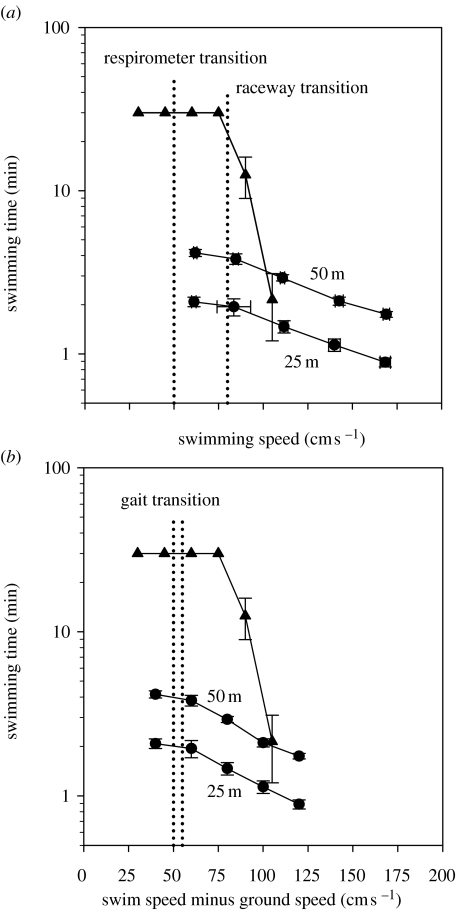Figure 10.
(a) A comparison of voluntary and forced swimming times versus swimming speeds for smallmouth bass (M. dolomieu). Data are presented for the duration of the ascent in 25 and 50 m raceways at swimming speeds at and above the gait transition. Once the fish voluntarily switch swimming gait (broken vertical line), the swimming time decreases significantly, indicating that fish are increasing their ground speed as well as swimming speed to overcome increasing water velocity. When fish perform a critical swimming speed test in a respirometer (time-intervals and speed increments were 30 min and 15 cm s−1, respectively: N=8; mean fork length was 32.1 cm), they make a gait transition (broken vertical line) at a lower swimming speed than with voluntary ascents. Data were adapted from Peake & Farrell (2004, 2005). (b) This graph shows how removing the effect of ground speed alters the data presented in a. To account for the differences in ground speed between critical swimming speed tests in respirometers and voluntary ascents in raceways, the data are presented as swimming speed minus ground speed. Gait transition occurs at the same swimming speed minus ground speed for both types of experiment. This result is taken as evidence that fish incorporate ground speed into their decision about swimming speed and, in particular, gait transition. Data were adapted from Peake & Farrell (2004, 2005).

